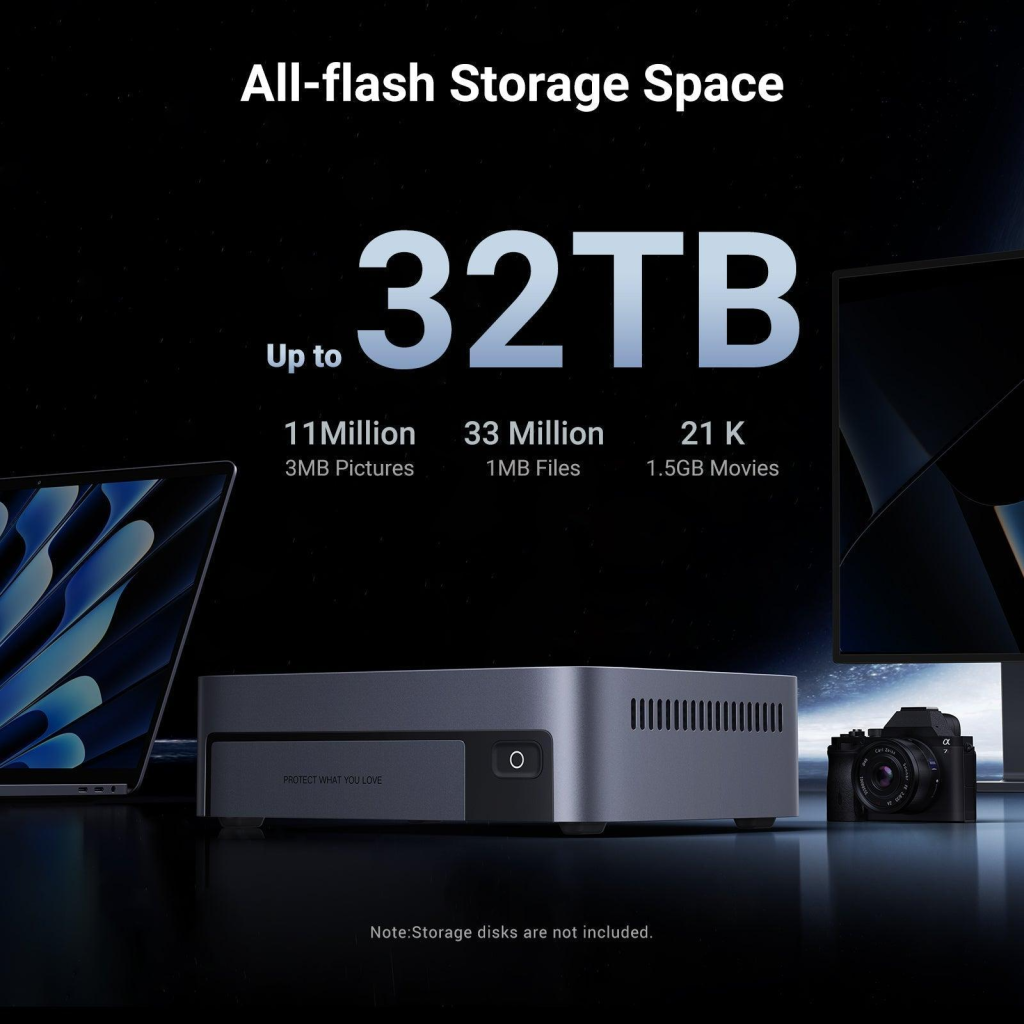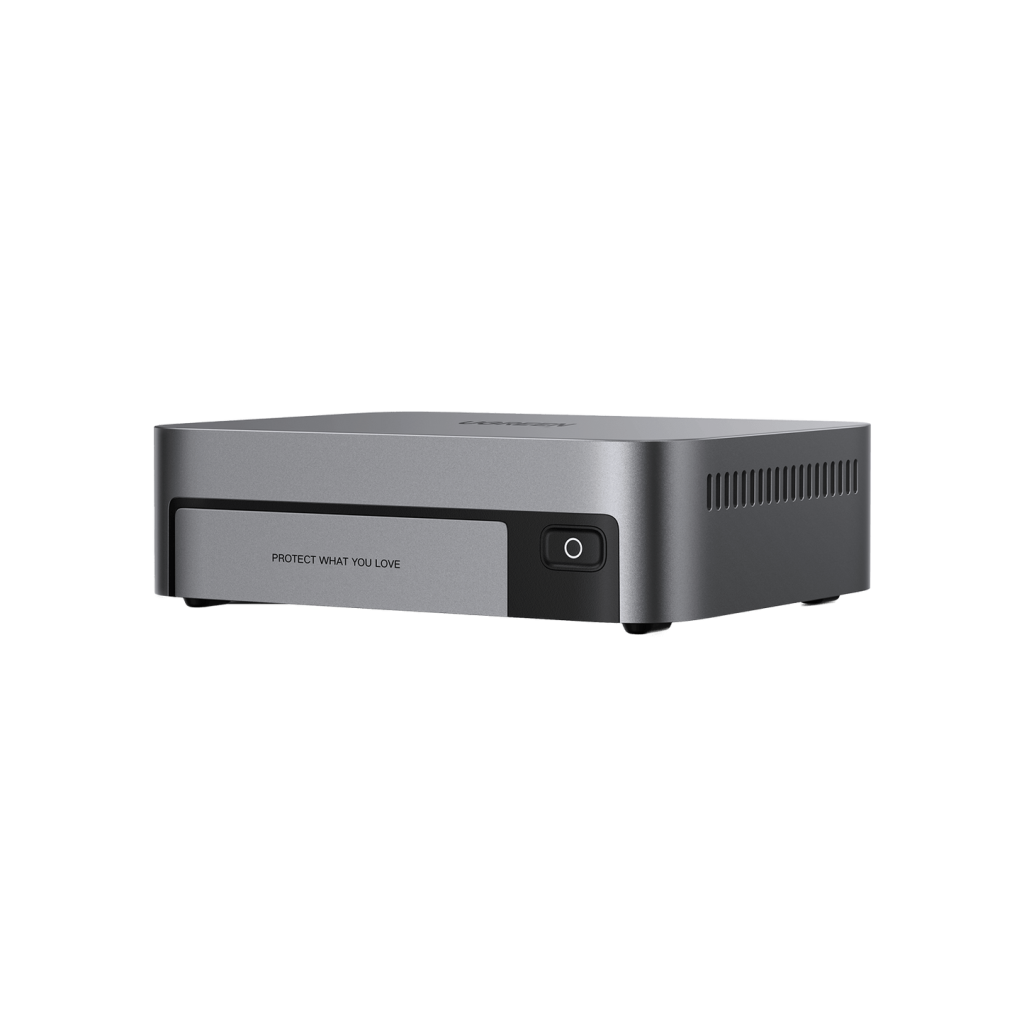Picture this: A wedding photographer’s hard drive fails the night before delivering final edits, or a video production team loses hours of footage due to corrupted storage. These nightmare scenarios highlight why professional creators need robust, lightning-fast storage solutions. Enter NVMe NAS (Network Attached Storage) – a revolutionary technology combining blazing-fast NVMe SSDs with network-accessible storage. While traditional external drives and older NAS systems struggle with massive RAW photo libraries and 4K video projects, often creating frustrating bottlenecks during editing, NVMe NAS eliminates these limitations. Creative professionals routinely handle files reaching hundreds of gigabytes, and the need for instantaneous access has never been more critical. This article explores how NVMe NAS technology transforms professional creative workflows, providing not just unprecedented speed and capacity, but also essential data protection and collaboration capabilities that modern content creators demand.
Understanding NVMe NAS: Next-Gen Storage for Demanding Workflows
Network attached storage (NAS) has long served as a centralized storage solution, offering shared access across networks. However, traditional NAS systems relied on conventional hard drives and SATA connections, creating performance bottlenecks. NVMe (Non-Volatile Memory Express) technology revolutionizes this landscape by leveraging PCIe connections to deliver unprecedented data transfer speeds up to six times faster than SATA SSDs. When integrated into NAS systems, NVMe creates a powerful synergy that transforms professional storage capabilities. The architecture combines specialized NVMe controllers that process multiple command queues simultaneously, high-performance SSDs offering sustained read/write speeds exceeding 3,000 MB/s, and advanced network interfaces supporting 10GbE or faster connections. This evolution marks a significant departure from traditional NAS devices, which struggled with simultaneous access and large file operations. Modern NVMe NAS systems feature dedicated processors, expanded memory capacity, and optimized firmware to handle intensive workloads while maintaining consistent performance across multiple users. This fundamental shift in storage technology enables creative professionals to work with massive files as smoothly as if they were stored locally.

Critical Benefits for Photographers and Videographers
NVMe NAS systems deliver game-changing advantages for creative professionals handling extensive media libraries. With storage capacities reaching hundreds of terabytes, these systems easily accommodate growing collections of RAW photos, 4K video footage, and even emerging 8K content. The real breakthrough comes during editing sessions – photographers can instantly access and manipulate massive RAW files while videographers edit multiple 4K streams without dropped frames or playback stuttering. This seamless performance extends to team environments, where multiple editors can simultaneously access the same project files at full speed. The professional-grade data protection through RAID configurations ensures work remains safe, offering various redundancy levels without compromising performance. Most importantly, NVMe NAS future-proofs creative workflows as file sizes continue to grow. Today’s 45-megapixel RAW photos and 4K video projects are just the beginning – these systems handle tomorrow’s 100-megapixel images and 8K footage with equal ease. The technology also enables efficient remote collaboration, allowing teams to share massive project files securely while maintaining local-like performance through high-speed network connections. This combination of capacity, speed, and protection transforms how creative professionals manage their digital assets, eliminating the traditional compromises between performance, accessibility, and security.

How NVMe NAS Achieves Blazing-Fast Data Access
The revolutionary speed of NVMe NAS stems from fundamental architectural advantages over traditional SATA-based systems. While SATA connections limit data transfer to a single command queue at 6 Gb/s, NVMe leverages PCIe lanes to process multiple parallel commands at speeds reaching 32 Gb/s per lane. This dramatic difference becomes immediately apparent in professional workflows, where multiple 4K video streams can be edited simultaneously without buffering. The technology’s superior performance comes from direct CPU-to-storage communication, eliminating the legacy AHCI protocol’s overhead. Modern NVMe NAS systems combine this blazing-fast storage with optimized network interfaces, typically featuring 10GbE or 25GbE connections that ensure network speed matches storage capabilities. Advanced caching algorithms further enhance performance by predicting access patterns and storing frequently-used data in ultra-fast memory. Real-world testing demonstrates the impact: editors can work directly with multiple 8K video streams, achieving sustained transfer rates above 2,500 MB/s with latency under 0.2ms. This near-instantaneous response transforms previously impossible workflows into smooth, real-time experiences.
Case Study: Workflow Transformation
A professional video production studio switched from traditional NAS to NVMe NAS, reducing their 4K editing timeline render times from 45 minutes to just 6 minutes. Client review cycles shortened dramatically, with full-resolution previews loading instantly instead of buffering. During a recent on-location shoot, the team backed up 1TB of footage in under 15 minutes, compared to their previous two-hour backup window, enabling same-day rough cuts for director review.
Choosing Your NVMe NAS Storage Device: Key Considerations
Selecting the right NVMe NAS requires careful evaluation of several critical factors to ensure it meets professional creative demands. Storage capacity planning should account for both current needs and projected growth over 2-3 years, with many professionals finding that their storage requirements double annually. A system with 4-8 drive bays provides ideal scalability, allowing incremental expansion without requiring immediate full population. Network infrastructure demands particular attention – while 1GbE connections severely limit NVMe’s potential, 10GbE represents the minimum for professional workflows, with 25GbE offering headroom for multiple simultaneous users. Storage configuration choices significantly impact performance and cost – pure NVMe SSD arrays deliver maximum speed but at premium prices, while hybrid setups using NVMe cache drives with traditional HDDs can offer an effective balance. Leading manufacturers like UGREEN offer comprehensive solutions that balance performance with reliability, featuring advanced cooling systems and robust build quality essential for continuous operation. When budgeting, professionals should consider the total cost of ownership, including drives, network infrastructure upgrades, and potential expansion needs. A proper professional NVMe NAS investment typically ranges from mid-four figures to low five figures, depending on capacity and performance requirements.
Implementing Professional Data Protection Strategies
Professional data protection for creative assets requires a multi-layered approach that goes beyond basic backups. RAID configurations form the foundation, with RAID 6 offering optimal protection through double parity, ensuring data survival even if two drives fail simultaneously. For photographers and videographers, implementing automated backup schedules during off-peak hours prevents workflow interruptions while maintaining data security. Modern NVMe NAS systems support advanced versioning and snapshot capabilities, allowing creatives to recover specific file versions or entire project states from any point in time. Enterprise-grade encryption protects sensitive client content both at rest and during transfer, using AES-256 standards. Offsite replication through dedicated 10GbE connections or secure internet channels provides disaster recovery protection, automatically synchronizing critical projects to secondary locations. Comprehensive monitoring systems track drive health, system performance, and backup status, sending immediate alerts through email or mobile notifications when issues arise. This proactive approach ensures creative professionals can focus on their work while maintaining ironclad data protection.
Step-by-Step Setup Guide
Begin by installing NVMe drives in the correct slots, ensuring proper thermal management. Configure network settings with static IP addresses and enable DHCP reservation on your router. Create user groups with specific access permissions for different project types and team roles. Install backup software and configure daily incremental backups with weekly full backups. Validate the setup by performing test restores from both local and offsite backups, verifying file integrity and access speeds meet production requirements.
The Future of Professional Storage: Speed, Security, and Scalability
NVMe NAS technology represents a transformative leap forward for creative professionals, finally eliminating the storage bottlenecks that have long plagued high-end media workflows. By combining lightning-fast NVMe performance with robust networking capabilities, these systems deliver the perfect balance of capacity, speed, and reliability that photographers and videographers desperately need. As file sizes continue to grow with 8K video and higher-resolution sensors becoming standard, the investment in NVMe NAS infrastructure becomes not just beneficial but essential for staying competitive in the creative industry. The ability to instantly access massive media libraries, collaborate seamlessly with team members, and maintain bulletproof data protection provides an undeniable advantage in today’s fast-paced production environment. For professionals serious about optimizing their workflow and protecting valuable creative assets, the time to embrace NVMe NAS technology is now. Take the first step by evaluating your current storage bottlenecks and planning the transition to a system that will serve your needs both today and tomorrow.

